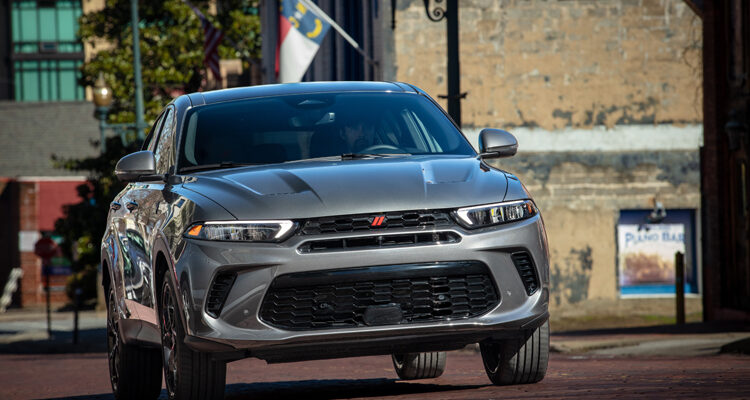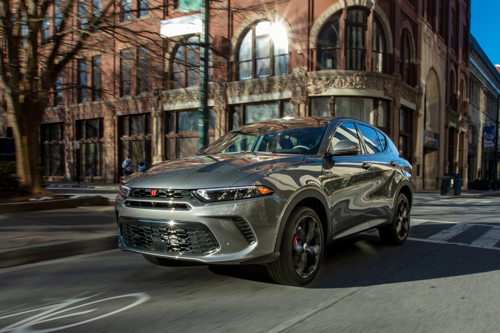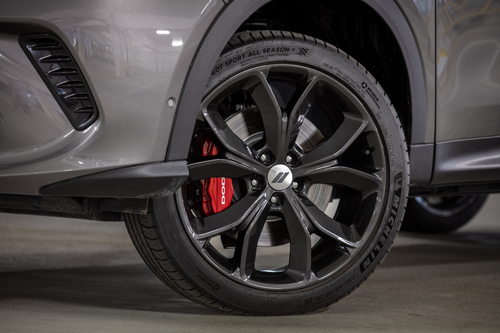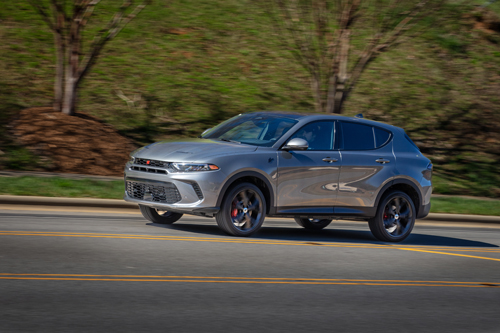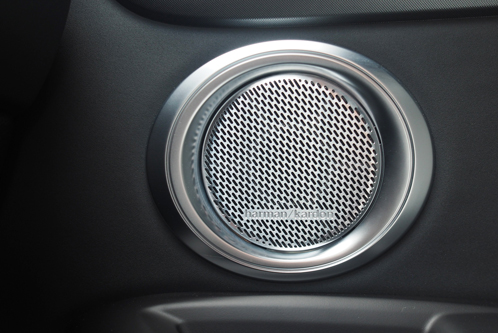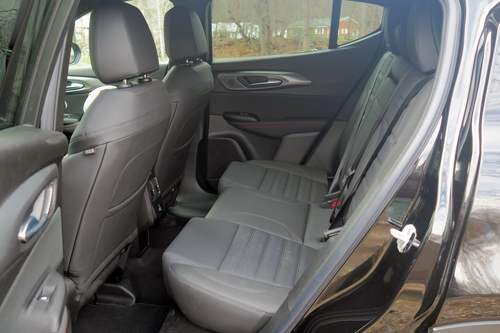A decade has passed since Dodge last launched a new model, but the long wait just might be justified with the arrival of the Hornet. Sold in both standard gasoline and a plug-in hybrid form, the compact crossover is expected to introduce a whole new audience to the marque.
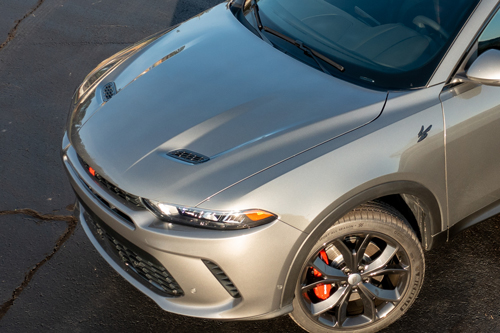
“It’s the new gateway to the Dodge brand … and we’re excited because it’s the first electrified performance vehicle that’s going to come to market,” says head of product planning Mike Szymkiewicz, during a presentation at the launch event held recently in Asheville, North Carolina. “[And] It was important that it looks like a Dodge, feels like a Dodge and drives like a Dodge.”
Seems like all the boxes have been ticked. The Hornet oozes company DNA, which is evident on a number of areas around the exterior.
“Look at some of the design cues: the mail slot grille, the vented hood, the front facia, and the wraparound the taillight in the back. To me, I see Charger in the front and Durango in the back. I think our designers did a pretty good job — I think it’s a great, great fit,” Szymkiewicz added.
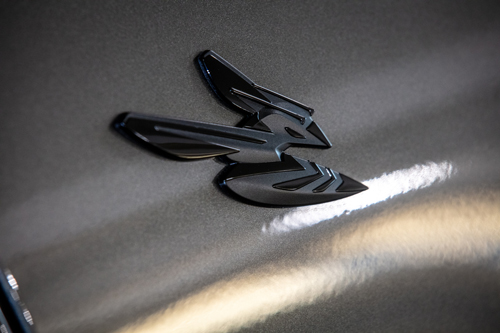
Roughly the size of a Mazda CX-5, the body panels have a signature muscular aesthetic to them, and the matte black body aero and wheel arch liners give a nice contrast particularly on some of the more fun paint colours like Acapulco Gold and Hot Tamale. The internal combustion GT variant wears 17-inch silver wheels, while the top-of-the-line R/T PHEV boasts 18-inch Graphite Grey alloys.
Fittingly, a Hornet badge is found on the front fenders celebrating the revival of the name last used for a concept minicar in 2006. And for the first time, the classic Dodge Rhombi logo at the rear is illuminated serving as a nod to the transition to a zero emissions future.
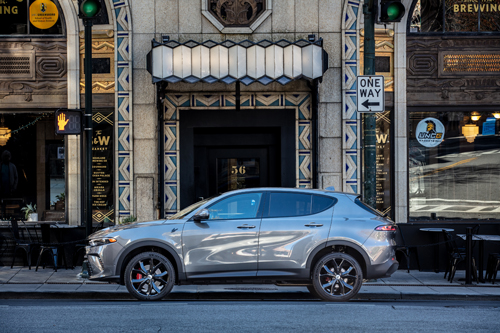
The interior is just the right amount of sporty featuring a wrapped dash and red stitching accents throughout the black cabin. The highly-customizable 12.3-inch digital instrument display is slightly angled toward the driver for optimal ergonomics, and the flat-bottom steering wheel yields an extra touch of performance feel. Depending on trim a sunroof and Alcantara upholstery is optional.
Uconnect is now Android based, and the fifth-generation infotainment system with a 10.25-inch screen is quite advanced allowing users to tailor the home screen layout, music preferences and HVAC controls among other things and link them to individual profiles. Android Auto and Apple CarPlay connectivity is wireless.
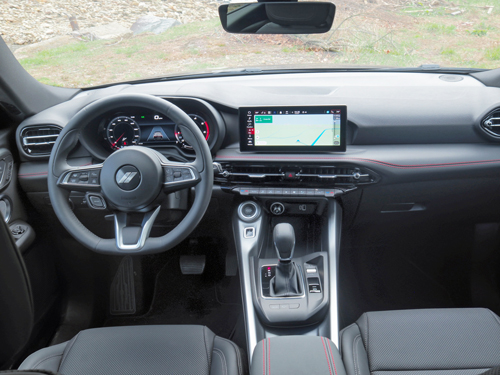
Journalists had the opportunity to try out both versions. The entry GT takes advantage of a 2.0-litre turbocharged inline four cylinder delivering 265 horsepower and 295 lb-ft of torque to all four wheels via a nine-speed automatic transmission, making the Hornet the most powerful CUV under $40,000.
Pressing the Sport button on the steering wheel tightens up the steering, stiffens the Koni shocks and adjusts the throttle mapping to introduce an enthusiast-approved experience. Even in regular mode the SUV accelerated smoothly and fairly quickly, and handled great on the windy Mount Pisgah roads thanks to the fully independent suspension, torque vectoring system and standard all-wheel drive.
Upgrading to the R/T unlocks a 1.3 turbocharged MultiAir engine, mated to a six-speed automatic transmission, complemented by a 90-kilowatt electric motor spinning the rear axle and a 15.5-kilowatt-hour lithium-ion battery pack. Together a net 285 horsepower and 383 lb-ft of torque is created, and 184 lb-ft of the latter comes on instantly really making the hybrid feel significantly faster from a stop than its I.C.E. sibling.
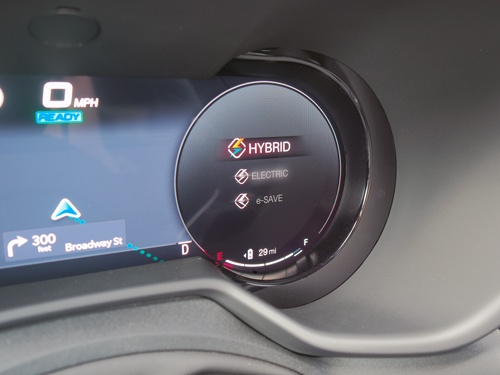
As seen on some other competitors the vehicle has a temporary boost function called “PowerShot.” To activate, enable Sport mode and then tug on both steering wheel paddle shifters simultaneously. An icon appears on gauge cluster and then when the gas pedal is fully depressed past a kickdown point, there’s an extra 25 horsepower on tap for 15 seconds. A 15-second cooldown period ensues before a repeat attempt can be made, energy level permitting.
Approximately 50 kilometres of zero emissions operation is offered on a full charge. Three PHEV pre-sets are available to suit different scenarios: Hybrid automatically switches between propulsion sources to optimize fuel economy; Electric prioritizes utilizing the electric motor; and E-Save does the opposite to save the battery for later use. In addition, regenerative braking is always happening in the background to top up energy reserves.
Being based on stablemate the Alfa Romeo Tonale, the 2023 Dodge Hornet is built at the same Stellantis facility in Naples, Italy. Prices for the GT start at MSRP $37,995, and the R/T at 45,495. Production begins in April.
2023 Dodge Hornet GT
Price as tested: $43,995.00 (Plus)
Configuration: Front engine / all-wheel drive
Engine: 2.0-litre turbocharged four cylinder
Transmission: 9-speed automatic
Power/torque: 288 hp / 295 lb-ft
Fuel: Premium
Combined 8.8 L/100km
Warranty: 3 years/60,000 kilometres
Competitors: Hyundai Tucson, Mazda CX-5
2023 Dodge Hornet R/T
Price as tested: $50,995.00 (Plus, includes $5,000 iZEV rebate)
Configuration: Front engine/ all-wheel drive
Engine: 1.3-litre turbocharged four cylinder + 90 kw electric motor
Transmission: 6-speed automatic
Power/torque: 288 hp / 383 lb-ft (net)
Fuel: Premium
Combined 9.8 L/100km
Warranty: 3 years/60,000 kilometres (battery: 8 years/160,000 kilometres)
Competitors: Hyundai Tucson Hybrid, Mazda CX-5 Turbo
Website: Dodge Canada



